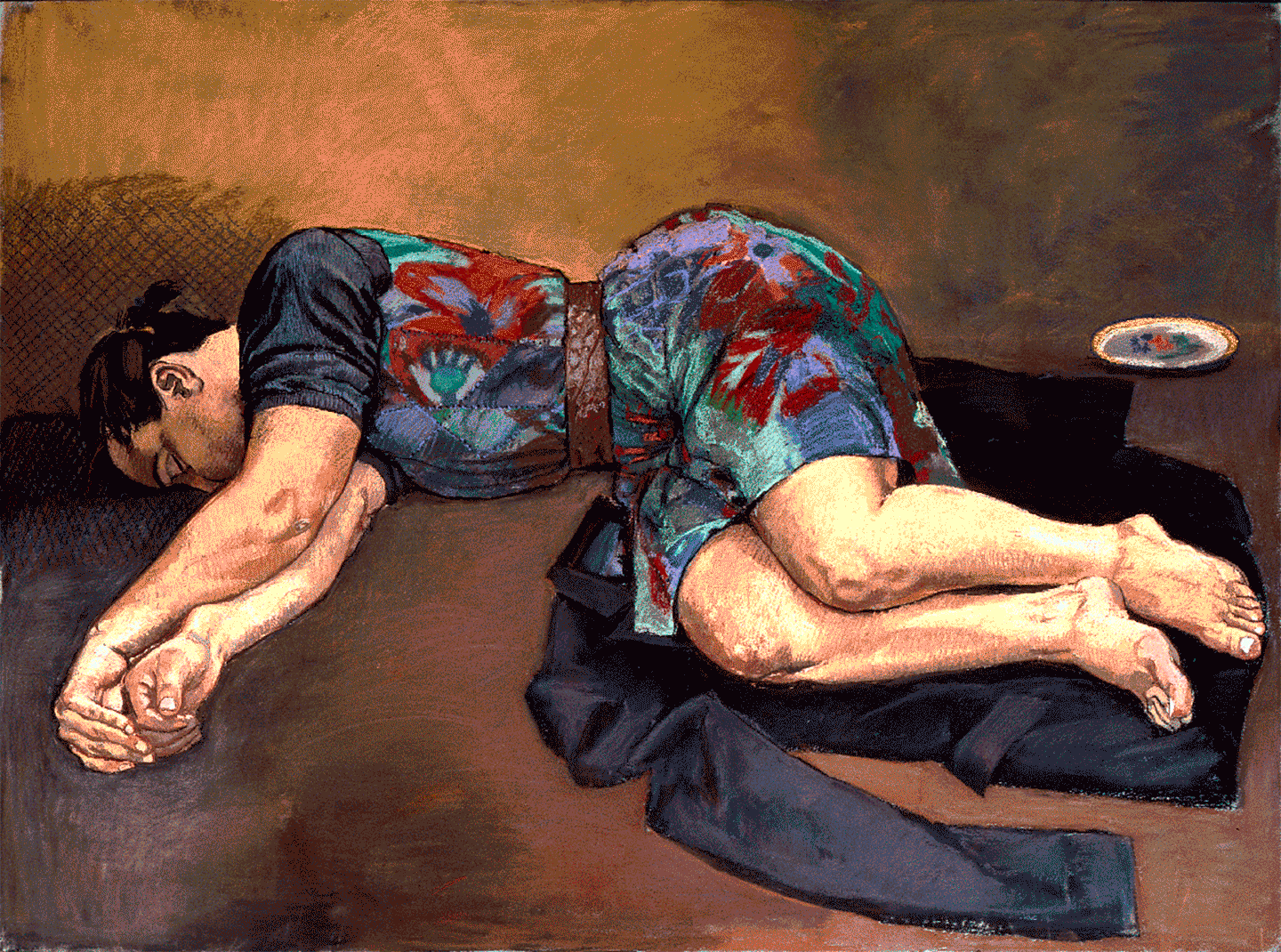Between Your Teeth
April 11–September 22, 2025
Rua Doutor Nicolau Bettencourt
1050-078 Lisbon
Portugal
T +351 21782300
cam@gulbenkian.pt
Paula Rego and Adriana Varejão: Between Your Teeth presents nearly 80 works spanning over six decades, and including paintings, engravings, sculptures, and installations. It is a fascinating encounter between two artists from different generations, Paula Rego (Lisbon, 1935–London, 2022) and Adriana Varejão (Rio de Janeiro, 1964).
Curated by Adriana Varejão, Helena de Freitas and Victor Gorgulho, with scenography by Daniela Thomas, the exhibition explores surprising lines of contact between the two artists. Marked by dynamics of power and oppression, especially in relation to women, the violence and eroticism of the works will unsettle, provoke and linger in visitors’ memories, long after seeing them.
The title—Between Your Teeth—is taken from the 1974 “Poemas aos homens do nosso tempo” (Poems to the men of our time) by Brazilian poet and novelist Hilda Hilst. In a clear allusion to the dictatorial regime that had ruled Brazil over the previous ten years, Hilst denounces the power associated to greed, conquest, profit and exploitation.
In their representations of literal and metaphorical bodies, Paula Rego and Adriana Varejão reflect on how patriarchy, colonialism and all forms of oppression mutually interact, “chewing up” people and their stories. As if the artists were addressing the public directly and stating: “Our work is stuck between your teeth.” Their oeuvre symbolises forces of oppression and resistance.
This is the artists’ second joint exhibition, for which Adriana Varejão is presenting a newly produced work. Towards the end of Paula Rego’s life the two artists held an exhibition in Rio de Janeiro (Carpintaria, 2017)—Paula Rego’s first and only exhibition in that city.
Unfolding over 13 thematic rooms, the exhibition proposes an immersive dramaturgy. Each space, imbued with a domestic atmosphere, reveals new dimensions of the two artists’ psychological depth and imaginative power.
The first room, entitled “I was a land, a womb, a torn sail,” displays works by both artists who have adapted pre-existing stories to forge radical new expressions. The First Mass in Brazil (1993), by Paula Rego, evokes the work of the same name by the 19th century painter Victor Meirelles. It depicts the Tupi people attending a Catholic mass for the first time, and recalls the subjugation of lands and bodies that underpinned the colonial expansion.
In a similar gesture of reinterpretation, in Map of Lopo Homem (1992), Adriana Varejão uses the first Portuguese cartographic image of Brazil, from 1519, in which she replaces the central meridian with an open, deep and bloody wound, thereby suggesting Brazil’s violent past.
In another room, entitled “Extirpations,” Paula Rego’s Triptych (1998), from her series on abortion, depicts women in suffocating domestic environments, writhing in pain on stretchers. Rego described this series as a response to “the fear and pain and danger of an illegal abortion, which is what desperate women have always resorted to.”
These works are complemented by the pictorial installations that Adriana Varejão presented at the 1994 São Paulo Biennial, Extirpation of Evil by Overdose (1994) and Extirpation of Evil by Incision (1994). The presence of a stretcher and other real hospital objects, creates a striking corporeality, forging a dialogue with the rawness of Paula Rego’s series.
In the exhibition’s only open gallery, Paula Rego’s works Angel (1998) and Esfolada (Flayed) (2012) dialogue with Varejão’s triptych Wall with Incisions à la Fontana (2002). In the words of co-curator Helena de Freitas, the painting “embodies the interventionist dimension of Rego’s oeuvre—between the sword and the sponge, protection and revenge, punishment and forgiveness.”
In perfect dialogue with Angel, Varejão’s Wall with Incisions à la Fontana, a trompe-l’oeil painting, in which we see azulejo tiles, violently cut with incisions referencing artist Lucio Fontana’s signature style. We are left with the impression that it was the sword-wielding Angel that sliced into Varejão’s painting, and then used the sponge to wipe clean the blood-stained tiles.
The exhibition is accompanied by a publication co-edited with Lenz Press including images of all the artworks in the exhibition, essays by Elena Crippa and Raphael Fonseca, and a conversation piece between Adriana Varejão, Helena de Freitas and Victor Gorgulho.
Curators: Adriana Varejão, Helena de Freitas and Victor Gorgulho
Scenography: Daniela Thomas
Open hours
10am–6pm
Saturdays, 10am–9pm
Closed on Tuesday

